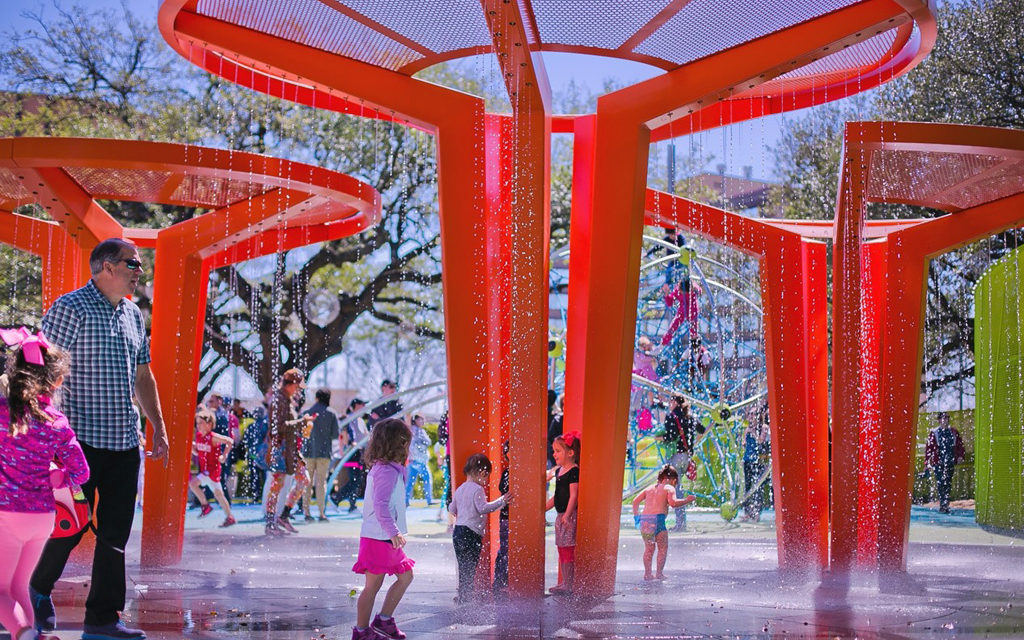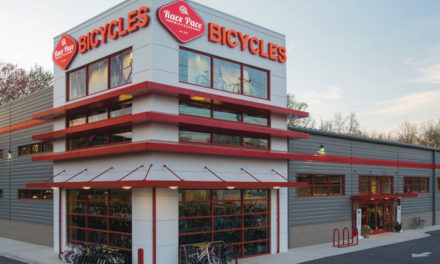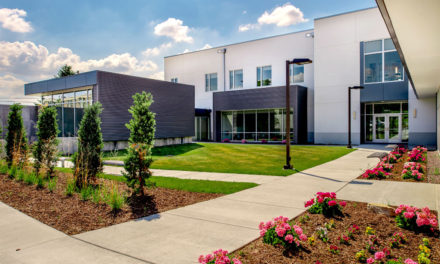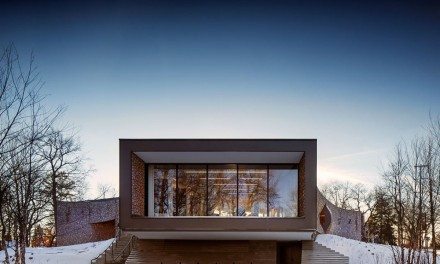BOSTON (October 9, 2018) – Two urban parks — Levy Park in Houston, Texas, and Madrid Río Park in Madrid, Spain — have been selected as winners of this year’s Urban Land Institute (ULI) Urban Open Space Award. The award recognizes outstanding examples of successful large- and small-scale public spaces that have socially enriched and revitalized the economy of their surrounding communities. The competition includes a cash prize that goes to the organizations responsible for the maintenance and upkeep of the winning park spaces.
Levy Park, owned by the Upper Kirby Redevelopment Authority and designed by OJB Landscape Architecture, is one of the only public green spaces in Houston’s Upper Kirby District. Formerly an underused park, the 5.9-acre space now offers a children’s garden, rain garden, free programming and public events and a multipurpose performance space. More than 10,000 people visit the park weekly, a significant increase from earlier years when the park received just 75 visitors a week.
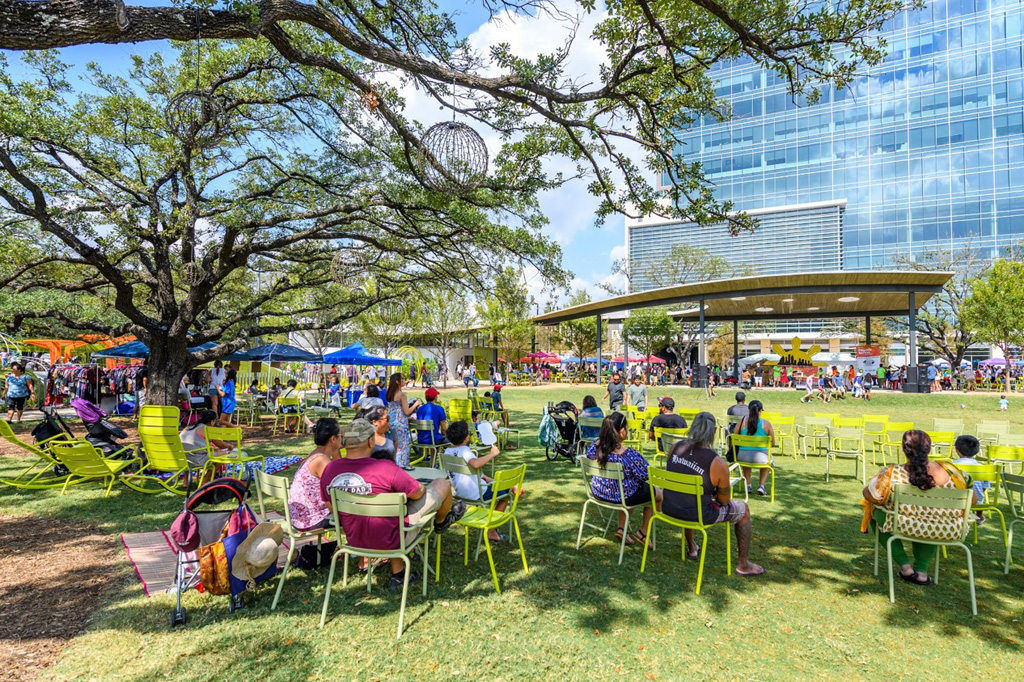
Levy Park: The 42,000 SF event law offers flexible site furnishings and plenty of space for relaxation and social interaction with the year-round programming initiatives and daily rosters of activities such as yoga, Zumba, concerts and more. Photo credit: Geoff Lyon
Madrid Río Park, owned by the Madrid City Council and designed by Burgos & Garrido, Porras & La Casta, Rubio & A-Sala, and West 8, is a project that knit together the southern and northern parts of Madrid, Spain, and which benefits some of Madrid’s most disadvantaged neighborhoods. The 360-acre park required the burying of a major highway, along with a steadfast commitment from the city’s leadership in the face of public opposition. The park now hosts 4,000 programs a year while attracting more than 1 million visitors.
“These parks are part of a select group of places that are making our cities more interesting and appealing,” said ULI Trustee and Jury Chairman Stuart I. Ackerberg, Chief Executive Officer of the Ackerberg Group. “The jury found Levy Park to be a dynamic public-private partnership that was unique in how it was structured. The park is architecturally very strong and executed extremely well, and it provides appealing programming and amenities that benefit the entire Houston community,” he noted. “Madrid Rio is an out-of-the-box, creative linear park that has transformed an area previously separated by a freeway, and is now a six-mile long regional park that allows access, amenities and programming to all members of the community.”
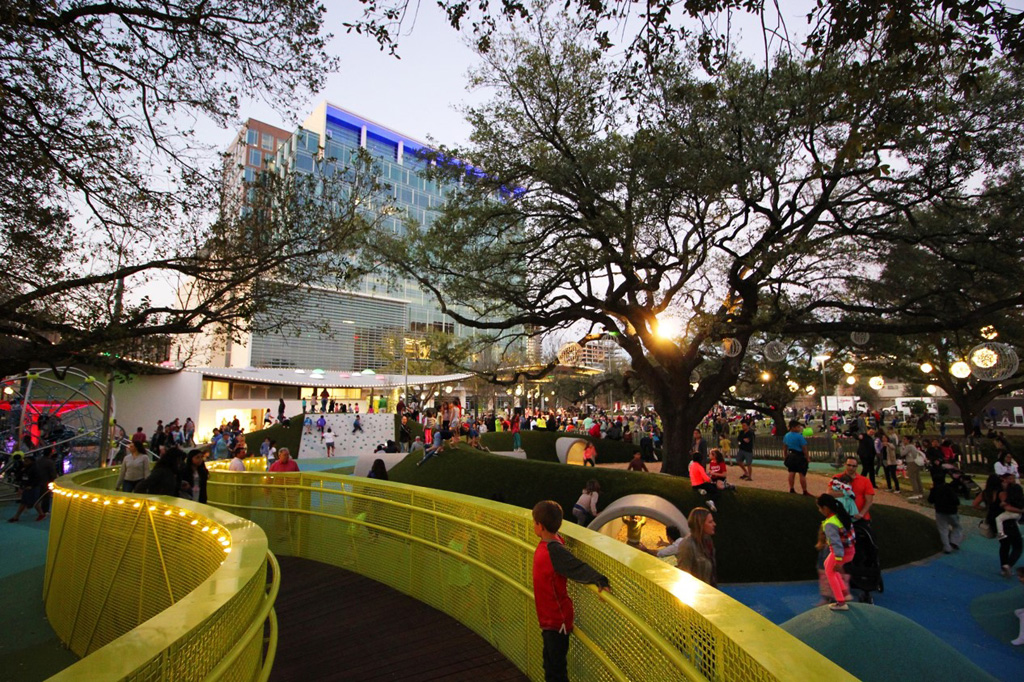
Levy Park: The site’s 70-year-old legacy live oaks are strategically incorporated into the design as key components of the elevated boardwalk and tree house located in the Children’s Garden. These monument tress provide much needed shade and anchor the center of the park. Photo credit: Scott Blons.
The winners were selected from an impressive collection of entries representing urban areas from across the globe. While landscape architecture and urban design were factors in the judging process, the jury selected finalists based on a broader set of criteria, including overall project performance and how each impacted or revived their surrounding areas.
The jury also chose to honor Ricardo Lara Park in Los Angeles with a Special Community Impact recognition. The park is located in a densely populated neighborhood immediately adjacent to a freeway. Opened in October 2015, it features five activity zones that offer different amenities, including a community garden, a shade pavilion, a dog park, a children’s play area, and an adult fitness area, plus bioswales and basins that treat runoff and act as flood prevention. “This park, which turned a very challenging area into a very dynamic one, is innovative, creative and replicable in cities around the world,” Ackerberg said.
To be eligible for the competition, an open space project must have been opened to the public for at least one year and no more than 15 years; be predominantly outdoors and inviting to the public; provide abundant and varied seating, sun and shade, trees and plantings with attractions; be used intensively on a daily basis by a broad spectrum of users throughout the year; have a positive economic impact on its surroundings; promote physical, social, and economic health of the larger community; and provide lessons, strategies, and techniques that can be used or adapted in other communities.
In addition to Jury Chairman Ackerman, other 2018 awards jury members include: Jury Vice Chairman Lynn S. Carlton, vice president and regional leader of planning at HOK, St. Louis; Antonio Fiol-Silva, founding principal of SITIO architecture + urbanism, Philadelphia; Glenda E. Hood, cofounder of TriSect, Orlando, Florida; Mehul J. Patel, chief operating officer of Midwood Investment & Development, New York City; Mitchell J. Silver, commissioner of the New York City Department of Parks and Recreation, New York City; and F. Karl Zavitkovsky, principal, Enterprise Bridge USA, Dallas.

